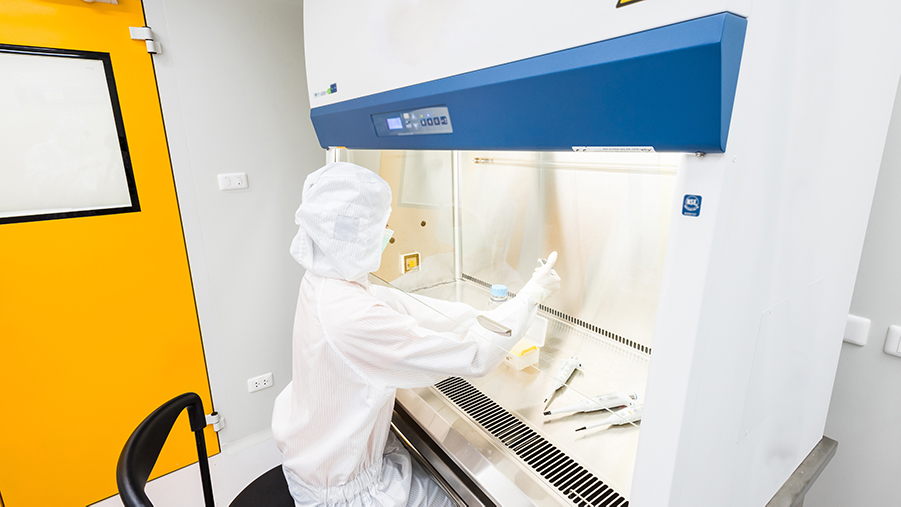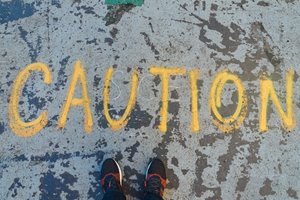5 Non-Negotiable Cleanroom Behaviors that Every Lab Tech Needs to Know
September 20, 2019 Katie Kiley Brown, Jared Eberly & Josh Horn
Working with clients on behalf of Azzur Labs, we’re afforded the opportunity to travel to myriad companies and witness cleanroom behavior. And, we’ve seen it all: the good, the bad, and the ugly.
Based on our research, we’ve compiled the following list as general parameters for acceptable behavior in and around the cleanroom.
Mandatory caveat: The following list was generated based on our personal experiences. Every facility has its own guidelines that must be adhered to. Make it a top priority to know and understand the mandatory cleanroom behaviors of your facility.

1. Remember that good cleanroom behavior actual starts before you enter the room itself.
Hygiene.
Your mom has preached this for years, but good hygiene is key! We can’t stress it enough—be sure to have good general hygiene, to begin with! Wash your hands—well and often—and wear clean clothes. If you’re hitting the gym (and, good for you!!!), don’t assume you can throw on some deodorant and then come straight to the lab. Simply put, be clean when you enter the cleanroom.
Back to basics.
When you are getting ready for work with those excellent hygiene practices, limit your scents. Why? In order for heavily scented soaps, colognes, and perfumes to do their job and emit your signature aura, they need to be alcohol-based and, therefore, continuously evaporating off of your body or clothes and into the air.
Feeling under the weather? Stay home.
While there are no written national or international guidelines for how sick is “too” sick to enter a cleanroom, it’s important to follow any company guidelines and use your better judgment. Especially in the compounding pharmacy setting, it’s imperative to remember the ultimate end user. When preparing agents for patients with compromised immune systems, exposure to remnants of your illness could be devastating.
Empty hands are good hands.
If you think about the items that you “can’t live without”—your purse, phone, or water bottle—they’re the things you touch the most and bring with you almost everywhere—yeah...even the bathroom. Need we say more? Leave them out of the cleanroom.
2. Follow proper gowning methods. 
As a rule of thumb, at a minimum, ensure you completely understand and gown to the facility requirements. But, since you’re here, we know you're not the “at-a-minimum” type. So, following is a list of rules for foolproof gowning techniques.
Make sure that your cleanroom garments fit correctly. If an item is too small, it may tear with movement. In the same vein, movement in garments that are too large will cause air to billow from openings in the sleeves and neck. And, as you’re gowning or once you’re in the room, remain cognizant of any compromised garments, as you’ll require complete regowning. DO NOT simply put new gowns on.
When it comes to garments and protective gear, never reuse materials. If you leave the cleanroom for any reason, you MUST dispose of the materials and regown in new items. Even the smallest exposure outside the cleanroom environment can compromise or contaminate the working space.
Finally, a rule of thumb: It’s always best to go to the lavatory before going to the laboratory. For the sake of efficiency and risk of contamination, in-and-out traffic is not recommended.
3. Do not disturb.
Airflow is a crucial airflow to cleanroom dynamics. Since even minor disturbances in the environment can cause contamination, it’s important to be mindful of your movement.
In the cleanroom, efficiency reigns supreme, so think before you move. Can you bring something along with so you can take one less trip later? Is there a shorter path to your next workstation?
We get it. Four- to five-hour stints in the cleanroom can be daunting, and distractions are sometimes welcome. But, use your common sense. While it may be tempting, in the cleanroom, there is NO: dancing, dabbing, bottle flipping, chair racing, or the like. (“Really?” you ask. Yes, we’ve seen it all.)
Last, but not least, be aware of how many people in the room at any given time. The more people there are milling about, the poorer the control and the higher the risk of contamination. So, don’t be afraid to speak up and reevaluate the techs on site.
4. “In” means in, and “out” means out.
Cleanrooms come in all shapes, sizes, and configurations, but one thing is always the same: one of the riskiest elements of the cleanroom environment is the movement pattern of the items and personnel coming into and out of the space.
Oftentimes, pressure controls and air balancing are employed to maintain a “clean in, dirty out” flow of air within the cleanroom, and it’s essential that people and things follow the same pattern.
Stay abreast of the designated pattern in your facility. As you’re mindful of your movements within the cleanroom, stay as diligent of your flow as you enter and exit.
5. Stay situationally aware.
No matter how careful you are to monitor your own actions in and around the cleanroom, none of it matters if the cleanroom itself isn’t up to snuff. What makes a cleanroom a cleanroom are the controls put in place to ensure the inherent safety of its internal environment.
From air pressure to temperature, the cleanroom ecosystem is carefully calibrated to ensure the most optimal atmosphere for the project at hand. If just one of those controls is off, even a small amount, it could drastically affect production.
Our suggestion is to proactively monitor all controls, as well as door function, within the room in order to report and remediate any issues as quickly as possible.
Remaining mindful throughout your working day is key. Keep your eyes peeled for things such as exposed skin, torn suits, and proper technique for both yourself and your colleagues.
Looking for a winning partner in cleanroom and lab services? Let's talk. Visit Azzurlabs.com for more information!

